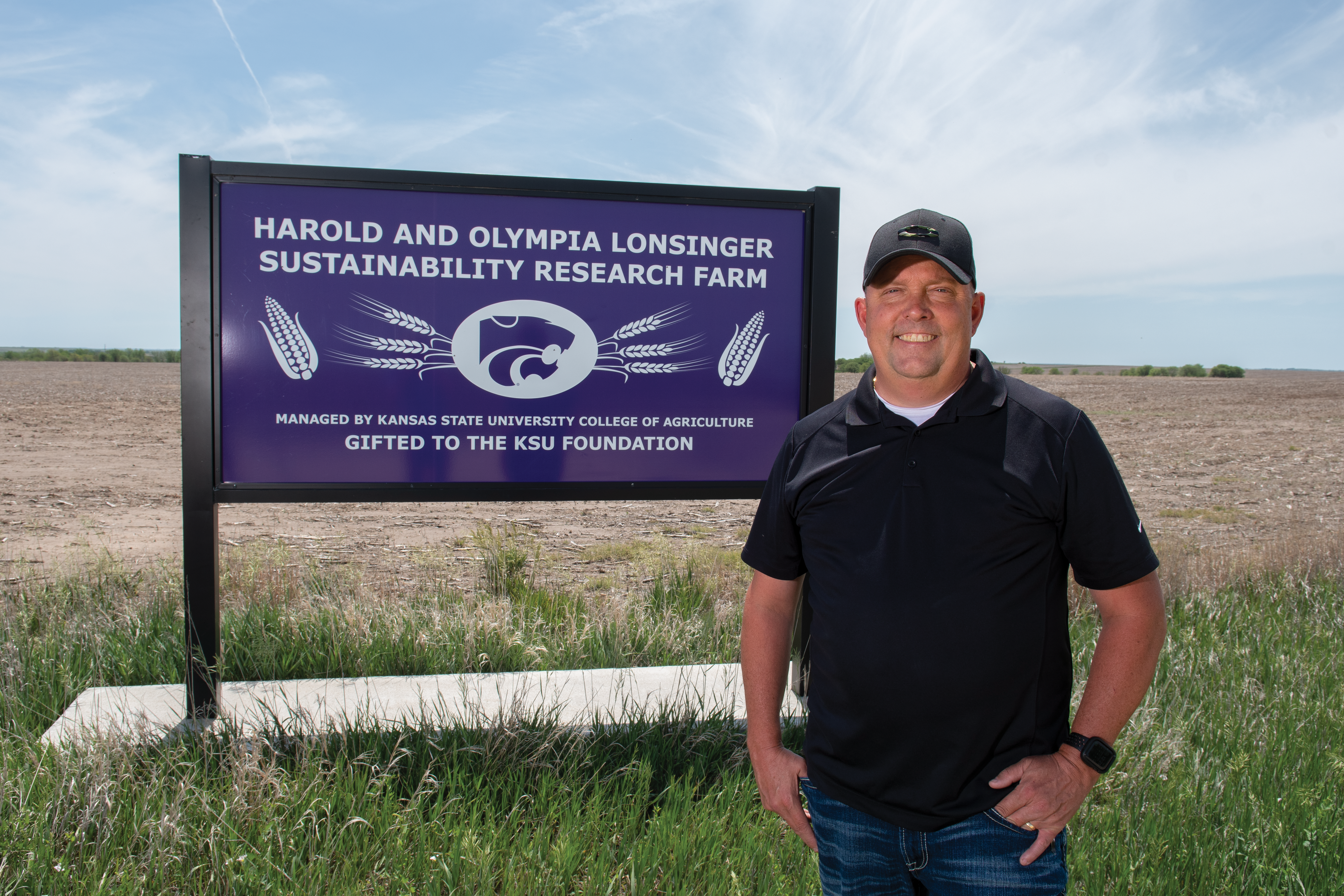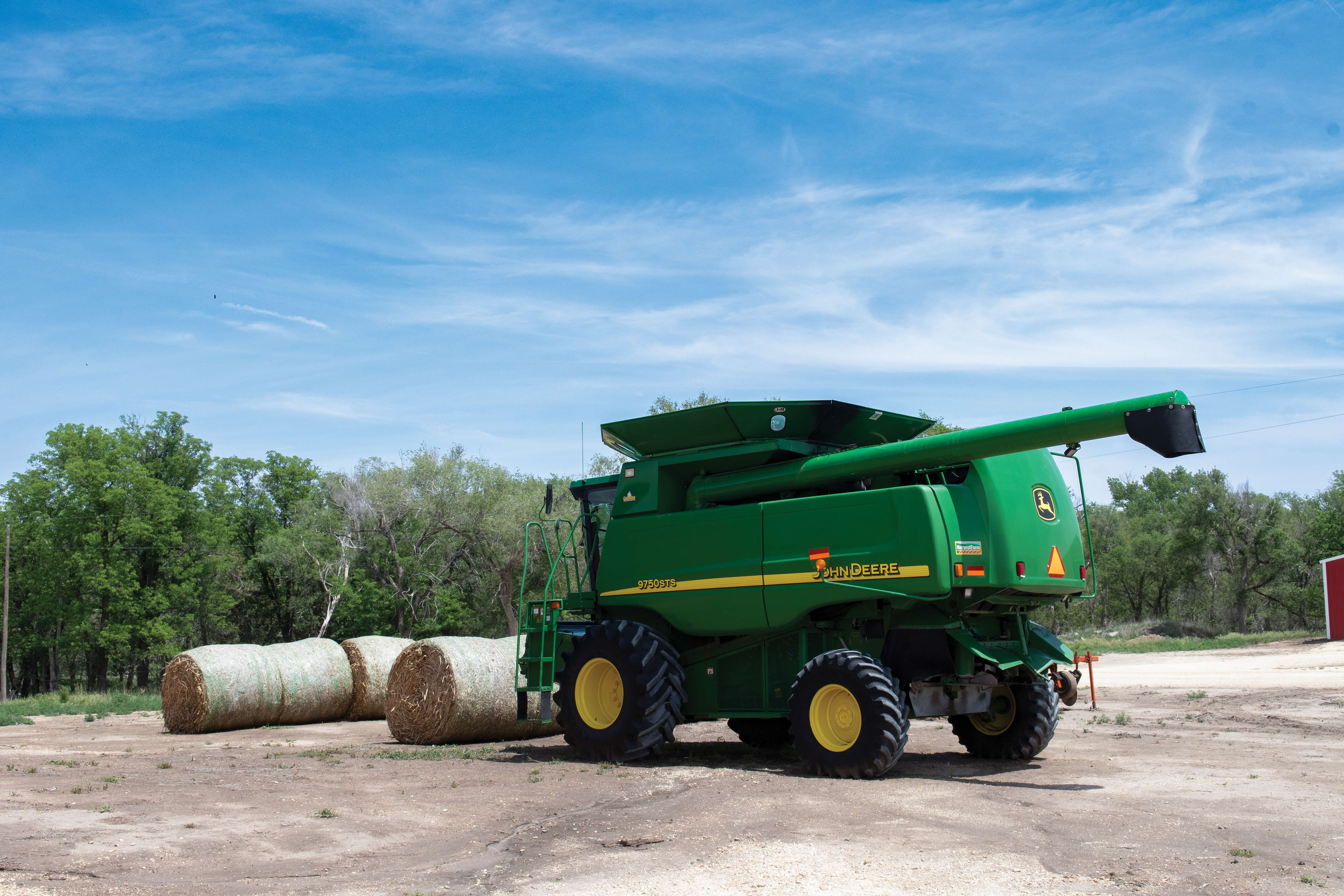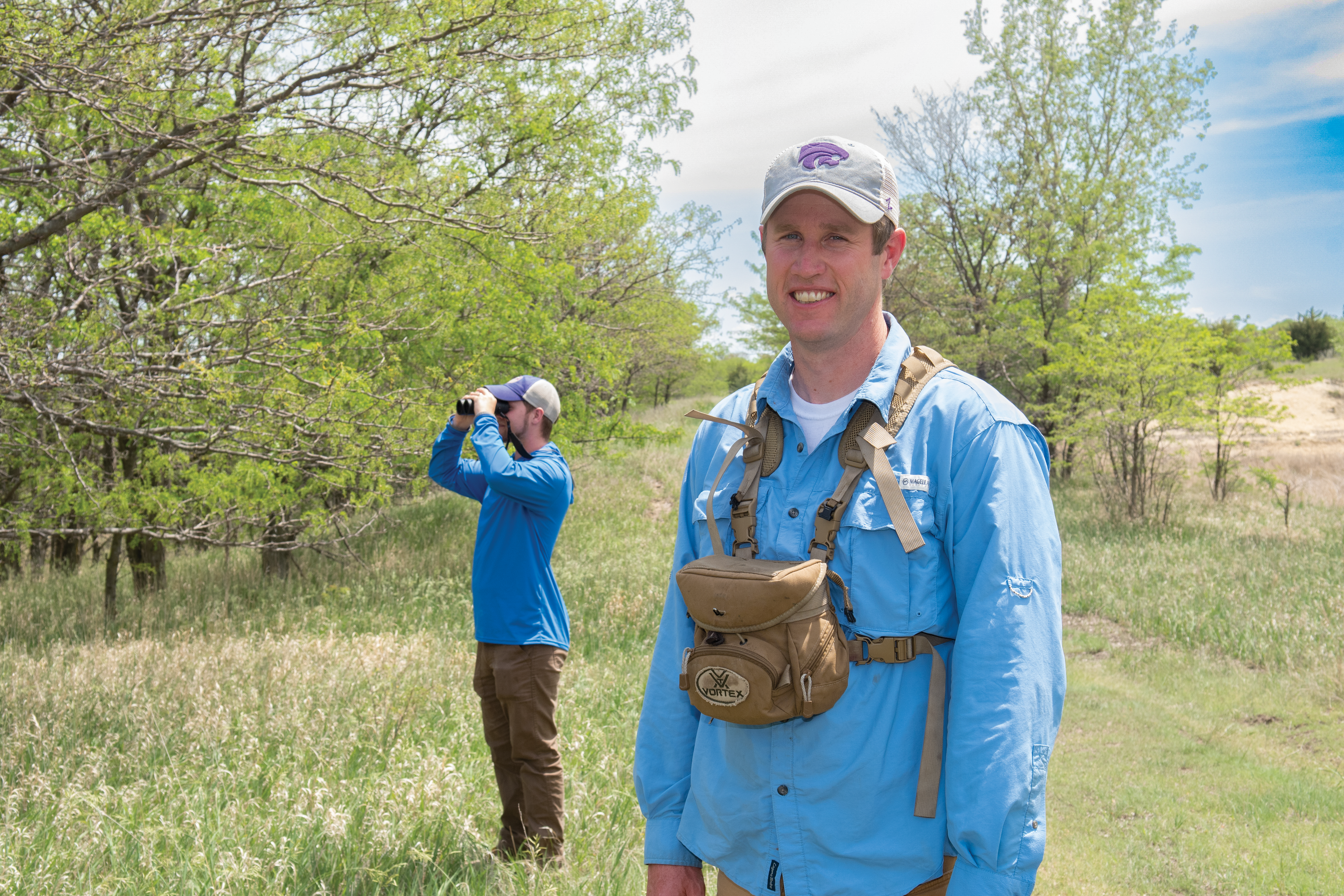Supporting a Legacy
 After a long career as a mechanical engineer, Harold Lonsinger decided to become a farmer.
After a long career as a mechanical engineer, Harold Lonsinger decided to become a farmer.
By Susan Schiff
Photos by Dan Donnert
He and his wife Olympia purchased a farm about 30 miles east of Alton, Kansas, which eventually grew to 2,300 acres and provided opportunities to support their shared interest in raising cattle and crops while preserving the health of the land.
In 2009, Olympia died. Eight years later, Harold initiated the process of donating the farm to K-State's College of Agriculture to making it a teaching, research, extension/engagement farm focused on finding the best ways to raise food in a sustainable manner.
In December 2021, Harold got caught in one of the state’s worst wildfires brought on by severe drought and winds that reached 100 mph. The 95-year-old Harold was apparently checking the safety of his cattle and property when he ran off the road and was trapped in a ditch just beyond the border of his farm. That day 163,000 acres of Kansas farmland and prairie burned, 42 buildings were destroyed, and hundreds of cattle and three men were killed, including Harold Lonsinger.
“Harold’s death was very traumatic for me,” said Spencer Casey, assistant director for K-State Research and Extension and the person responsible for getting the property ready to serve as a teaching, research and engagement farm. “We had spent a lot of time together talking about what he’d like to see done on the farm. I am so grateful I had the chance to work closely with him,” said Casey. “It gave me the opportunity to really understand his vision.”
Much work has been accomplished to support Harold and Olympia’s legacy, including: creating a new entrance to the headquarters; renovating five buildings, including one that can be used for large field day, FFA or 4-H presentations; adding electricity, lighting and internet service; replacing fencing; getting permits; and preparing the farm for the work of researchers.
Craig Poore, whose property borders the Lonsinger farm, says he hopes the majority of the property will remain in production, but he’s particularly excited by the opportunities the farm will offer to help children better understand farming practices.
“I would love to see 4-H and FFA groups, ag education and entomology classes come to the farm to dig in the ground and learn more. It would be a great opportunity,” said Poore, the Osborne County 4-H leader, and past chair and former board member of the United Sorghum Checkoff.
Several research projects are currently underway on the farm, including a wildlife survey being conducted by Dan Sullins, assistant professor of K-State’s Horticulture and Natural Resources Department.
“Wildlife is disappearing around the world as more and more habitats are turned into cities, towns and farmland.” said Sullins. “Biodiversity is the foundation of life on Earth. Every species plays a critical role. Our ultimate goal is to better understand how we as humans can share the planet with other species who live here.”
 According to Sullins, over 700 million grassland birds have been lost since the 1970s with 74% of grassland species showing population decline. This initial survey will provide a baseline of wildlife living on the farm.
According to Sullins, over 700 million grassland birds have been lost since the 1970s with 74% of grassland species showing population decline. This initial survey will provide a baseline of wildlife living on the farm.
As of March, Sullins and his team identified 52 different species of birds on the property including ring-necked pheasants, northern bobwhite quail, and one lone greater prairie-chicken. Using trail cameras, they also detected the following mammals: white-tailed deer, raccoons, coyotes, eastern cottontail rabbits, striped skunks and an American badger.
Allison Louthan, assistant professor of Biology, and her doctoral student, Aleah Querns, are learning more about interactions between native and non-native plants on the property. Using shelters that allow scientists to control the moisture levels plants experience, the scientists can determine which native and non-native plants grow best in different climates. They are also adding seeds of native plants to invaded areas to determine if native species can grow there again.
“As temperatures become hotter and we struggle with drought, we need to learn more about which plants grow best in those climates,” said Louthan.
 She explained while some non-native plant species might become invasive and damaging to native biodiversity under hotter conditions, others might become less damaging. “We need to learn more about their potential,” Louthan said.
She explained while some non-native plant species might become invasive and damaging to native biodiversity under hotter conditions, others might become less damaging. “We need to learn more about their potential,” Louthan said.
Casey believes Harold would be proud of the progress and the direction the farm has taken.
“Sometimes when I’m working at the farm, I can still hear Harold’s voice talking to me about what we need to do next,” said Casey. “We have a big obligation to Harold and Olympia to do this right, and we’re committed to doing that.”